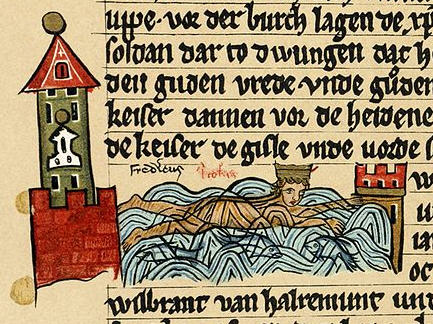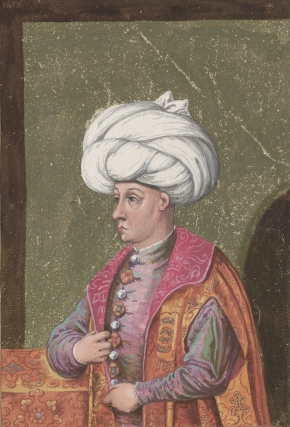|
Gökçetaş, Mut
Gökçetaş is a neighbourhood in the municipality and district of Mut, Mersin Province, Turkey. Its population is 573 (2022). It is situated to the east of Göksu River valley. Its distance to Mut is and to Mersin is . The village is an old village. During the reign of Ottoman sultan Beyazıt II (15th century), it was known as ''Sekitler''. The origin of the population was Abdal Abdāl () ''lit'': substitutes, but which can also mean "generous" 'karīm''and "noble" 'sharīf'' is a term used in Islamic metaphysics and Islamic mysticism, both Sunni and Shiite,La-Shay', Hussein and Negahban, Farzin, "Abdāl", in: ''Ency ..., a religious group, which migrated from Central Anatolia following the campaigns of Gedik Ahmet Pasha. Later it was renamed as ''Sanşa'' and after 1960 as Gökçetaş. The main economic activities are agriculture and animal breeding. References {{DEFAULTSORT:Gokcetas, Mut Neighbourhoods in Mut District ... [...More Info...] [...Related Items...] OR: [Wikipedia] [Google] [Baidu] |
Mut, Mersin
Mut is a municipality and Districts of Turkey, district of Mersin Province, Turkey. Its area is 2,718 km2, and its population is 62,874 (2022). Mut is a rural district at the foot of the Sertavul Pass on the road over the Taurus Mountains from Ankara and Konya to the Mediterranean coast at Anamur or Silifke. Mut is known for its special apricot variety, ''Mut şekerparesi'', and a statue of a girl carrying a basket of them stands at the entrance to the town. The summer is hot and the people of Mut retreat to high meadows (so called yayla (resort), yayla) even further up the mountainside. The forests up here are home to wild boar, and the Gezende reservoir on the Ermenek River is a welcome patch of blue in this dry district. The dam has a hydro-electric power station built in Romania. History The area has probably been inhabited since the time of the Hittites (2000 BC), and was later part of ancient Cilicia. Roman period Under the Roman Empire, the town was called Claudiopolis ... [...More Info...] [...Related Items...] OR: [Wikipedia] [Google] [Baidu] |
Mersin Province
Mersin Province (), formerly İçel Province (), is a Provinces of Turkey, province and Metropolitan municipalities in Turkey, metropolitan municipality in southern Turkey, on the Mediterranean Sea, Mediterranean coast between Antalya Province, Antalya and Adana Province, Adana. Its area is 16,010 km2, and its population is 1,916,432 (2022). The provincial capital and the biggest city in the province is Mersin, which is composed of four municipalities and district governorates: Akdeniz, Mersin, Akdeniz, Mezitli, Toroslar and Yenişehir, Mersin, Yenişehir. Next largest is Tarsus, Mersin, Tarsus, the birthplace of Paul the Apostle. The province is considered to be a part of the geographical, economical and cultural region of Çukurova, which covers the provinces of Mersin, Adana, Osmaniye Province, Osmaniye and Hatay Province, Hatay. The capital of the province is the city of Mersin. Etymology The province is named after its biggest city Mersin. Mersin was named after the a ... [...More Info...] [...Related Items...] OR: [Wikipedia] [Google] [Baidu] |
Turkey
Turkey, officially the Republic of Türkiye, is a country mainly located in Anatolia in West Asia, with a relatively small part called East Thrace in Southeast Europe. It borders the Black Sea to the north; Georgia (country), Georgia, Armenia, Azerbaijan, and Iran to the east; Iraq, Syria, and the Mediterranean Sea to the south; and the Aegean Sea, Greece, and Bulgaria to the west. Turkey is home to over 85 million people; most are ethnic Turkish people, Turks, while ethnic Kurds in Turkey, Kurds are the Minorities in Turkey, largest ethnic minority. Officially Secularism in Turkey, a secular state, Turkey has Islam in Turkey, a Muslim-majority population. Ankara is Turkey's capital and second-largest city. Istanbul is its largest city and economic center. Other major cities include İzmir, Bursa, and Antalya. First inhabited by modern humans during the Late Paleolithic, present-day Turkey was home to List of ancient peoples of Anatolia, various ancient peoples. The Hattians ... [...More Info...] [...Related Items...] OR: [Wikipedia] [Google] [Baidu] |
TÜİK
Turkish Statistical Institute (commonly known as TurkStat; or TÜİK) is the Turkish government agency commissioned with producing official statistics on Turkey, its population, resources, economy, society, and culture. It was founded in 1926 and headquartered in Ankara. Formerly named as the State Institute of Statistics (Devlet İstatistik Enstitüsü (DİE)), the institute was renamed as the Turkish Statistical Institute on November 18, 2005. See also * List of Turkish provinces by life expectancy References External linksOfficial website of the institute National statistical services Statistical Organizations established in 1926 Organizations based in Ankara {{Sci-org-stub ... [...More Info...] [...Related Items...] OR: [Wikipedia] [Google] [Baidu] |
Göksu River
The Göksu River (), known in classical antiquity, antiquity as the Calycadnus and in the Middle Ages as the Saleph, is a river on the Taşeli, Taşeli Plateau in southern Turkey. Its two sources arise in the Taurus Mountains—the northern in the Geyik Mountains and the southern in the Haydar Mountains—and meet south of Mut (District), Mersin, Mut. The combined stream then flows south to the Göksu Delta in the Mediterranean Sea near Silifke. Names is Turkish language, Turkish for "Sky Water". It is also known as the Geuk Su. It was known to the ancient Greeks as the ''Kalýkadnos'' (), latinization of names, latinized as the . It was known in the Middle Ages as the . Course The river is 260 km long and empties into the Mediterranean Sea 16 km southeast of Silifke (in Mersin province). The Göksu Delta, including Akgöl Lake and Paradeniz, Paradeniz Lagoon, is one of the most important breeding areas in the Near East; over 300 bird species have been observed. Amo ... [...More Info...] [...Related Items...] OR: [Wikipedia] [Google] [Baidu] |
Mersin
Mersin () is a large city and port on the Mediterranean Sea, Mediterranean coast of Mediterranean Region, Turkey, southern Turkey. It is the provincial capital of the Mersin Province (formerly İçel). It is made up of four district governorates, each having its own municipality: Akdeniz, Mersin, Akdeniz, Mezitli, Toroslar and Yenişehir, Mersin, Yenişehir. Mersin lies on the western side of Çukurova, a geographical, economic and cultural region of Turkey. It is an important hub for Turkey's economy, with Port of Mersin, Turkey's largest seaport located here. The city hosted the 2013 Mediterranean Games. As urbanisation continues eastward, a larger metropolitan region combining Mersin with Tarsus, Mersin, Tarsus and Adana (the Adana-Mersin Metropolitan Area) is in the making with more than 3.3 million inhabitants. Çukurova International Airport (COV), 74 kilometres (46mi) from Mersin city center, is the nearest international airport. There are ferry services from Mersin to F ... [...More Info...] [...Related Items...] OR: [Wikipedia] [Google] [Baidu] |
Ottoman Empire
The Ottoman Empire (), also called the Turkish Empire, was an empire, imperial realm that controlled much of Southeast Europe, West Asia, and North Africa from the 14th to early 20th centuries; it also controlled parts of southeastern Central Europe, between the early 16th and early 18th centuries. The empire emerged from a Anatolian beyliks, ''beylik'', or principality, founded in northwestern Anatolia in by the Turkoman (ethnonym), Turkoman tribal leader Osman I. His successors Ottoman wars in Europe, conquered much of Anatolia and expanded into the Balkans by the mid-14th century, transforming their petty kingdom into a transcontinental empire. The Ottomans ended the Byzantine Empire with the Fall of Constantinople, conquest of Constantinople in 1453 by Mehmed II. With its capital at History of Istanbul#Ottoman Empire, Constantinople (modern-day Istanbul) and control over a significant portion of the Mediterranean Basin, the Ottoman Empire was at the centre of interacti ... [...More Info...] [...Related Items...] OR: [Wikipedia] [Google] [Baidu] |
Beyazıt II
Bayezid II (; ; 3 December 1447 – 26 May 1512) was the sultan of the Ottoman Empire from 1481 to 1512. During his reign, Bayezid consolidated the Ottoman Empire, thwarted a pro-Safavid rebellion and finally abdicated his throne to his son, Selim I. Bayezid evacuated Sephardi Jews from Spain following the fall of the Nasrid Kingdom of Granada and the proclamation of the Alhambra Decree and resettled them throughout Ottoman lands, especially in Salonica. Early life Bayezid II was the son of Şehzade Mehmed (later Mehmed II) and Gülbahar Hatun, an Albanian concubine. At the time he was born, his grandfather Murad II was Sultan. When his grandfather died in 1451, his father became Sultan. There are sources that claim that Bayezid was the son of Sittişah Hatun, due to the two women's common middle name, Mükrime. This would make Ayşe Hatun, one of Bayezid's consorts, a first cousin of Bayezid II. However, the marriage of Sittişah Hatun took place two years after Bayezid was born ... [...More Info...] [...Related Items...] OR: [Wikipedia] [Google] [Baidu] |
Abdal
Abdāl () ''lit'': substitutes, but which can also mean "generous" 'karīm''and "noble" 'sharīf'' is a term used in Islamic metaphysics and Islamic mysticism, both Sunni and Shiite,La-Shay', Hussein and Negahban, Farzin, "Abdāl", in: ''Encyclopaedia Islamica'', Editors-in-Chief: Wilferd Madelung and, Farhad Daftary. to refer to a particularly important group of God's saints. In the tradition of Sunni Islam in particular, the concept attained an especially important position in the writings of the Sunni mystics and theologians, whence it appears in the works of Sunni authorities as diverse as Abu Talib al-Makki (d. 956), Ali Hujwiri (d. 1072), Ibn Asakir (d. 1076), Khwaja Abdullah Ansari (d. 1088), Ibn Arabi (d. 1240), and Ibn Khaldun (d. 1406). It is a rank of forty saints, but more often the larger group of 356 saints in Sufi hagiography. In this theology it is said that they are only known to and appointed by Allah, and it is through their operations that the world cont ... [...More Info...] [...Related Items...] OR: [Wikipedia] [Google] [Baidu] |
Gedik Ahmet Pasha
Gedik Ahmed Pasha (; died 18 November 1482) was an Ottoman statesman and admiral who served as Grand Vizier and Kapudan Pasha (Grand Admiral of the Ottoman Navy) during the reigns of sultans Mehmed II and Bayezid II. Very little was known about Gedik Ahmed Pasha in primary sources until late in historiography. Serbia and Albania had both been proposed as geographical regions for his birthplace and Mükrimin Halil Yinanç had even claimed that he was descended from the Byzantine Greek Palaiologos dynasty based on unnamed Western sources Yinanç claimed to have access to. Later research in the Ottoman archives of Vranje (southeastern Serbia) by Aleksandar Stojanovski established that Gedik Ahmed Pasha was a member of the local Serbian feudal families of the area and was born in the village Punoševce. Leading the Ottoman Army, he defeated the last Anatolian beylik (principality) resisting Ottoman expansion in the region, the Karamanids. The Karamanids had been the strongest prin ... [...More Info...] [...Related Items...] OR: [Wikipedia] [Google] [Baidu] |




